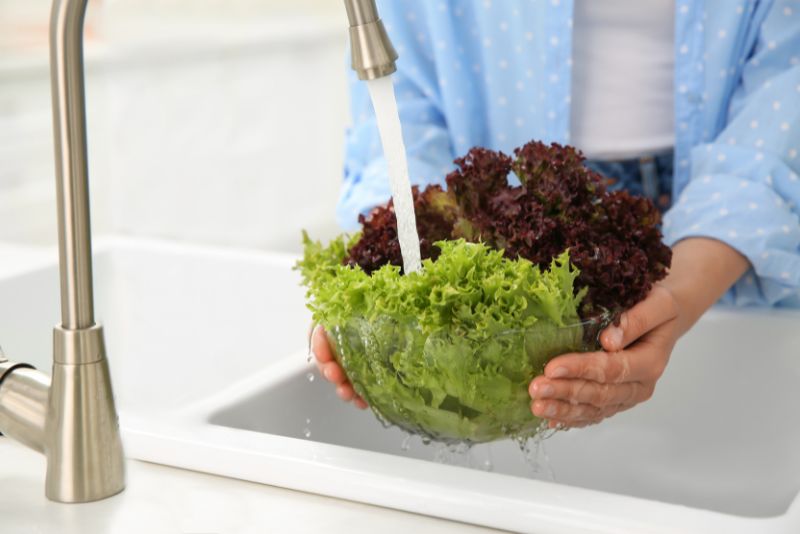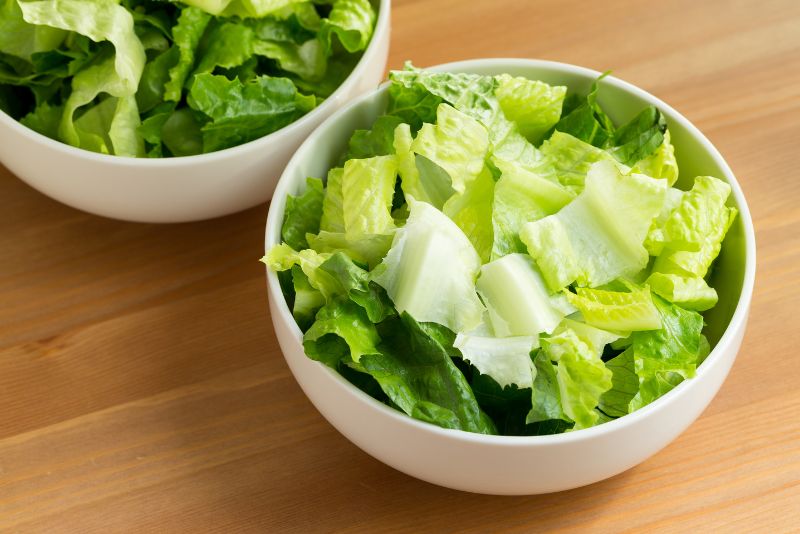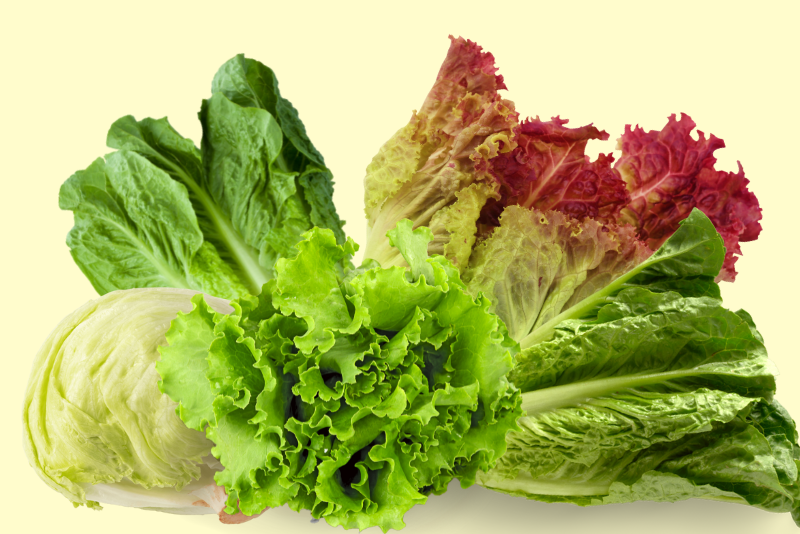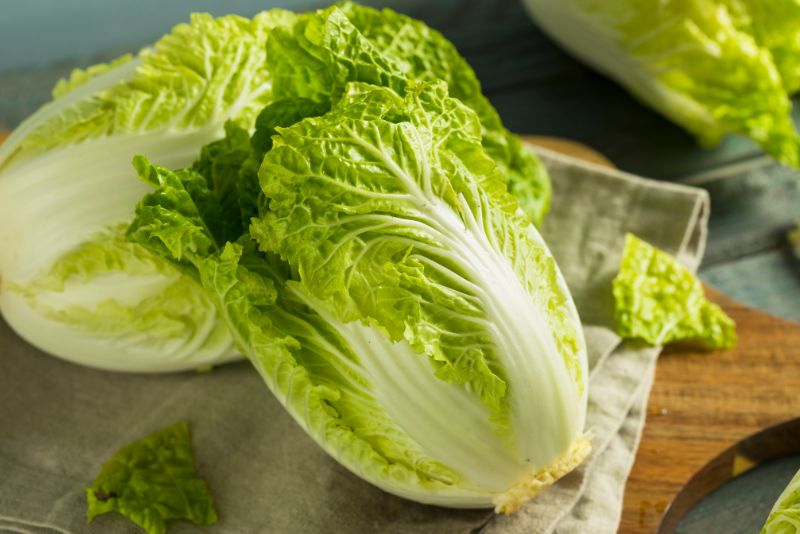Lettuce is one of my favorite leafy greens that can be used in a wide variety of dishes, from salads and sandwiches to soups and stir-fries. What’s more, it is a good source of vitamins A and C, as well as iron and folic acid.
However, since lettuce is a delicate vegetable, it can go bad relatively quickly if it’s not stored properly. But how to tell if lettuce is bad?
The best way to tell if lettuce is bad is by appearance. If the leaves are wilted, brown, or have black spots, then the lettuce has gone bad. Also, if the leaves are slimy and soft instead of crisp and crunchy, or if the lettuce has a rank smell, it has gone bad.
In this article, I’ll thoroughly discuss 6 easy ways to know if the lettuce is bad and how you can store it properly to extend its life.

Table of Contents
How to Tell if Lettuce Is Bad?
There are a few tell-tale signs that your lettuce has gone bad, so it’s important to know what to look for.
1. Brown or yellow leaves
The first thing you should do when you’re trying to determine if your lettuce is bad is to take a look at the leaves. They should be crisp and green, without any brown or yellow spots.
If the leaves of your lettuce are starting to turn brown or yellow, this is a sign that they are beginning to go bad.
2. Wilted leaves
Another sign that lettuce is beginning to go bad is wilted leaves. This usually happens when the leaves have been stored for too long in a humid environment, like the fridge.
The leaves will curl up and turn yellow or brown, and will no longer be crisp.
3. Mold on the surface
Mold is another sure sign that lettuce has gone bad. If you see any mold on the surface of your lettuce, it’s best to throw it out. Mold can spread quickly and cause the lettuce to rot.
4. Touch test
Another way to tell if lettuce is bad is to touch it. The leaves should be crisp and firm, not slimy or mushy.
If the leaves of your lettuce are starting to feel slimy, then the lettuce is on its way out.
5. Smell it
Finally, give the lettuce a sniff. It should smell fresh, not musty. Lettuce that’s gone bad will often have a sour smell. If you notice this, it’s best to throw it out.
6. Take a small bite
If you’re still not sure if your lettuce is bad, you can always taste it. Take a small bite of the leaf and see how it tastes.
If it’s fresh, it will have a crisp, slightly sweet, and watery flavor. If it’s beginning to go bad, it will taste bitter or sour.
So, those are a few ways to tell if the lettuce is bad. If you see any of these signs, it’s best to discard the lettuce and get a new batch. With proper storage, lettuce can last for up to two weeks.
But if it starts to go bad, it’s important to get rid of it so that it doesn’t spoil your dish. It’s better to waste a little bit of lettuce than to make yourself sick.
How To Store Lettuce to Extend Its Shelf Life

Now that you know how to tell if lettuce is bad, let’s talk about how to store it.
Lettuce should be kept whole and un-cut for the best quality. Once it’s been cut, the surface area is exposed, and it will start to brown.
If you need to cut the lettuce ahead of time, store it in a container with a damp paper towel. This will help to keep the leaves crisp and prevent them from drying out.
Lettuce should be stored in the crisper drawer of your fridge, in a plastic bag or container with holes for ventilation.
Do not wash your lettuce before storing it. Wash only as much lettuce as you need before using it. It’s important to make sure that the lettuce is dry before you put it in the fridge, as moisture can cause it to spoil more quickly.
You can also store lettuce in a plastic bag in the freezer, but it will lose some of its crispness. Frozen lettuce is best used in cooked dishes, like soups or stews.
Types of Lettuce

Before you leave, let’s learn a little bit about the different types of lettuce, so you know which one to use for which recipe.
There are dozens of varieties of lettuce, but they can generally be divided into four main categories:
1. Crisphead lettuce
Crisphead lettuces, like iceberg and Romaine, have crisp, crunchy leaves and a mild flavor. These lettuces are often used in salads and as a garnish.
2. Butterhead lettuce
Butterhead lettuces, like Boston and Bibb lettuce, have soft, delicate leaves and a slightly sweet flavor. These lettuces are often used in sandwiches and wraps.
3. Looseleaf lettuce
Looseleaf lettuces, like red and green leaf lettuce, have tender leaves with a slightly bitter flavor. These lettuces are often used in salads, soups, and stir-fries.
4. Summer crisp lettuce
Summer crisp lettuces, like Batavia and oakleaf lettuce, have crisp leaves and a slightly spicy flavor. These lettuces are often used in salads, sandwiches, and wraps.
Read more: Best Swiss Chard Substitutes
Frequently Asked Questions
What happens if you eat some bad lettuce?
If you eat bad lettuce without cooking it, you may experience nausea, vomiting, and diarrhea. These symptoms are caused by the bacteria that are present on spoiled lettuce.
According to CDC, a large percentage of U.S. foodborne illnesses are caused due to germs on produce eaten raw.
Can you get food poisoning from eating bad lettuce?
Yes, you can get food poisoning from eating bad lettuce.
Is it OK to eat lettuce that’s a little brown?
Lettuce that’s a little brown around the edges is probably still safe to eat, but it’s best to avoid lettuce that is significantly brown or wilted.
Why does lettuce get slimy?
Lettuce gets slimy because of the bacteria that are present on the leaves. These bacteria release a slime-like substance that can make the lettuce slimy and slippery.
When should you throw out lettuce?
If your lettuce is wilted, has brown spots (this might still be safe to eat), or is slimy, it’s best to throw it out. These are signs that the lettuce is starting to spoil, and it may make you sick if you eat it.
Is yellow romaine lettuce safe to eat?
Yes, yellow romaine lettuce is safe to eat as long as it’s fresh. It can be a good source of magnesium, calcium, potassium, and Vitamin C.
Conclusion
Lettuce can spoil quickly, so it’s important to know how to tell if it’s bad. The easiest way is to look for signs of spoilage, like wilted leaves, brown spots, and slime. If you see any of these, it’s best to throw the lettuce out.
You can extend the shelf life of lettuce by storing it in the fridge in a plastic bag or container with holes for ventilation.
